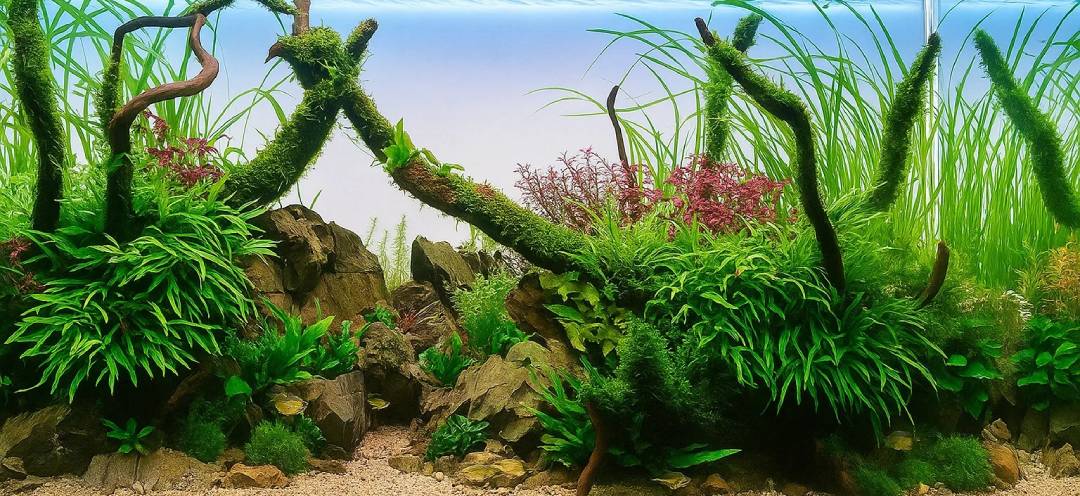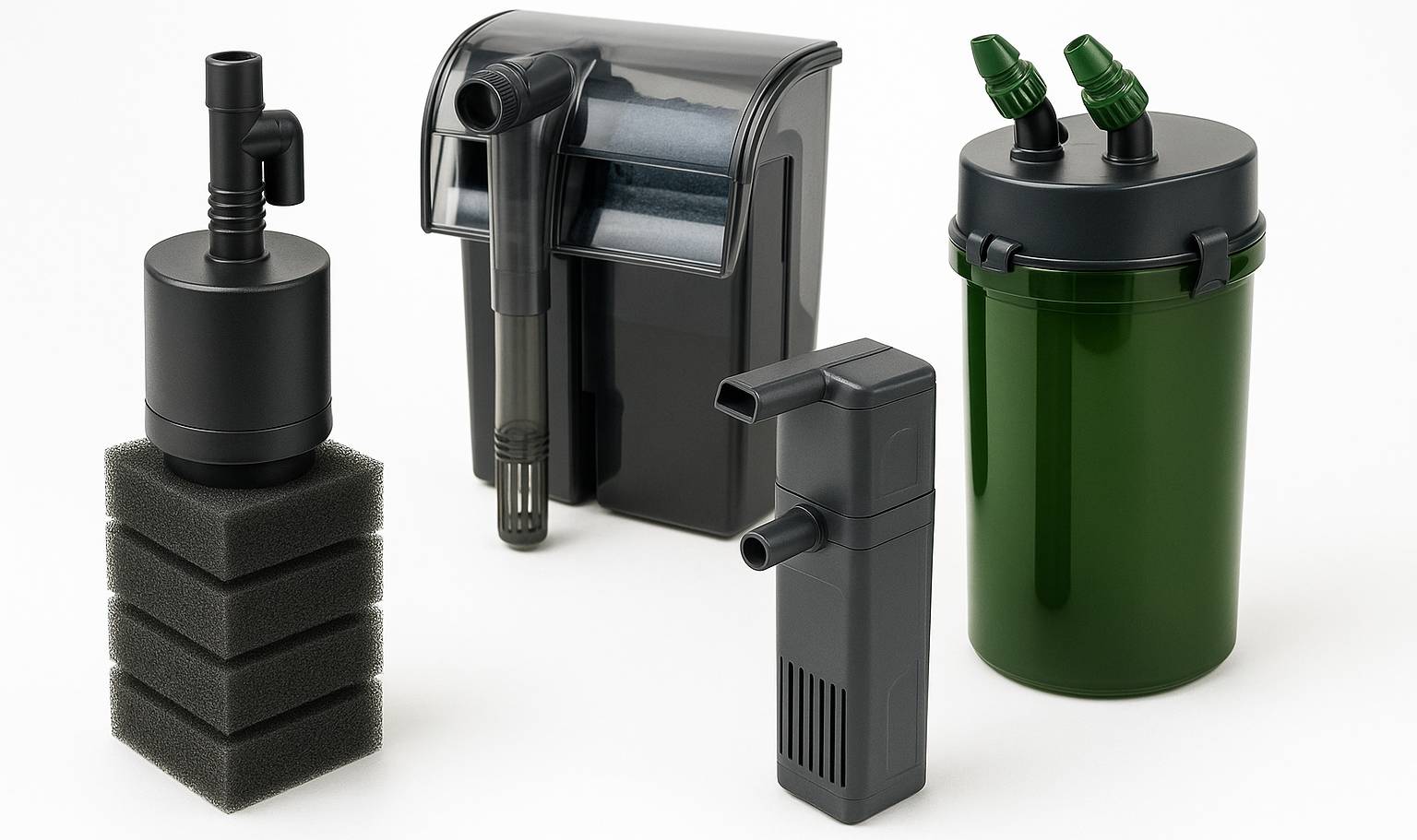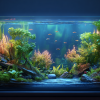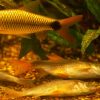Creating a Healthy Aquarium Fish Environment
Keeping an aquarium is an enjoyable and rewarding hobby that brings a slice of the aquatic world into your home. Whether you are a novice setting up your first tank or a seasoned aquarist looking to refine your care routine, creating a healthy aquarium environment involves more than filling a tank with water and adding fish. It requires an understanding of water chemistry, proper equipment, species‑appropriate habitats, and nutritious feeding. This comprehensive guide walks you through the essentials of setting up and maintaining a thriving aquarium and offers detailed tips tailored for different fish species.
Understanding Water Chemistry
Fish live their entire lives immersed in water, so its chemical composition directly affects their health and behaviour. Good water quality reduces stress, supports growth, prevents disease, and keeps fish active and vibrant. The foundation of water quality is the nitrogen cycle, the natural process that breaks down waste. Fish produce ammonia through respiration and excretion, and leftover food and decaying plants contribute additional ammonia. Beneficial bacteria convert ammonia into nitrite and then into nitrate. While nitrate is less toxic than ammonia or nitrite, high nitrate levels can stress fish and promote algae growth. Establishing this cycle (known as “cycling” a tank) before adding fish and maintaining it with regular water changes ensures safe conditions for fish.
Aquarists should monitor several key parameters:
- pH measures how acidic or alkaline the water is. Most freshwater community fish are comfortable in slightly acidic to neutral water (pH 6.5–7.5), while some species like African cichlids thrive in alkaline conditions around 7.8–8.5. Stability is more important than hitting an exact number; sudden pH swings can shock fish.
- General hardness (GH) reflects dissolved minerals such as calcium and magnesium. Soft water (low GH) suits tetras and angelfish, whereas livebearers and many African species prefer harder water.
- Carbonate hardness (KH) indicates the water’s buffering capacity. Adequate KH prevents sudden pH drops. If your tap water is very soft, adding crushed coral or a commercial buffer can stabilize the pH.
- Ammonia and nitrite should always be zero in a mature tank. Any detectable levels signal problems with filtration or overstocking.
- Nitrate should be kept below 40–50 ppm. Regular partial water changes, sensible feeding and live plants help keep nitrate under control.
Test kits or strips are essential tools. When setting up a new tank, test the water daily until ammonia and nitrite consistently remain at zero. Once the tank matures, monthly testing is usually sufficient unless you add new fish or notice signs of distress.
Selecting and Setting Up Equipment
Proper equipment is the backbone of a healthy aquarium. Choose equipment based on the species you plan to keep and the size of your tank.
Tank Size
Larger aquariums are generally more stable because they dilute toxins and resist rapid temperature fluctuations. A popular guideline for freshwater community fish is one gallon of water per inch of adult fish, but this should be considered a minimum. Active species, schooling fish and large fish require extra space. Bettas and other small fish still benefit from at least five gallons, while goldfish and cichlids need much larger tanks due to their size and waste production.
Filtration
A quality filter is arguably the most important piece of aquarium equipment. It removes physical debris, breaks down toxins, and provides a home for beneficial bacteria. Filters should offer three types of filtration:
- Mechanical filtration traps visible particles such as uneaten food and waste.
- Chemical filtration uses activated carbon or resins to remove dissolved contaminants and odors.
- Biological filtration provides media where nitrifying bacteria colonize and process ammonia and nitrite.
Filters are rated by gallons per hour (GPH). Choose a filter that can turn over the tank’s volume at least three to five times per hour. For example, a 20‑gallon tank should have a filter rated for 60–100 GPH. Ensure the filter’s flow rate suits your fish; bettas and other labyrinth fish prefer gentle currents, while riverine species appreciate stronger flow. Clean or replace filter media according to the manufacturer’s recommendations, but never clean all media at once — this preserves the beneficial bacteria colonies.
Heating and Temperature Control
Many tropical fish need stable warm water. A rule of thumb is 3–5 watts of heater power per gallon of water. Bettas, tetras, and most community fish prefer 72–82 °F (22–28 °C). Use a reliable heater with a built‑in thermostat and pair it with an aquarium thermometer for daily monitoring. Coldwater species like goldfish thrive at 65–75 °F (18–24 °C) and may not require heating if room temperatures are consistent. Some large tanks benefit from two smaller heaters placed at opposite ends to eliminate cold spots. Avoid temperature swings greater than 2 °F in 24 hours.
Lighting
Lighting not only showcases fish and décor but also supports live plant growth. For fish‑only tanks, 1–2 watts per gallon is often adequate. If you keep live plants, aim for 2–5 watts per gallon and select aquarium lights that provide full-spectrum output. Too much light can cause algae growth, so set your lights on a timer for 8–10 hours per day.
Substrate and Decorations
Substrate provides a surface for beneficial bacteria and can influence water chemistry. Gravel, sand and planted‑tank soils are common choices. For freshwater community tanks, inert substrate minimizes pH fluctuations. Crushed coral or limestone can be used to raise pH for African cichlids. Use enough substrate to create a 1–2 inch layer; roughly 1–2 pounds of substrate per gallon of water. Rinse new substrate thoroughly to remove dust before adding it to the tank.
Decorations such as driftwood, rocks and caves create hiding places, reduce stress and allow fish to establish territories. Driftwood can lower pH and soften water, while limestone raises pH. Choose décor designed for aquarium use to avoid contaminants. Live or artificial plants provide shelter and improve water quality; hardy species like Java fern, Anubias and hornwort are good options for beginners.
Water Conditioners and Testing Kits
Tap water often contains chlorine or chloramine that is lethal to fish. Use a water conditioner to neutralize these chemicals before adding water to your aquarium. Keep test kits on hand to monitor pH, hardness, ammonia, nitrite and nitrate. Some kits also test phosphate and copper, which can be important if you keep delicate invertebrates or have algae issues.
Maintaining Water Quality
Consistent maintenance is crucial to keep aquarium water safe. Even with proper filtration, waste and dissolved pollutants accumulate over time.
Partial Water Changes
Performing partial water changes regularly removes nitrates and replenishes essential minerals. A general schedule is changing 15–25 % of the water weekly, though heavily stocked or messy fish (like goldfish) may require more frequent changes. Use a gravel vacuum during water changes to siphon debris from the substrate. Never replace all of the water at once; this removes beneficial bacteria and can shock fish. Always match the temperature and pH of new water to the tank’s conditions and treat it with a dechlorinator.
Cleaning and Maintenance
Algae and waste build up on tank walls and décor. Use an algae scraper or sponge to clean glass or acrylic surfaces. Remove and rinse decorations if they become coated in algae; for stubborn buildup, soak them in a diluted bleach solution (3 % bleach for 15 minutes), rinse thoroughly and air‑dry before returning them to the tank. Clean filter intake tubes and impellers regularly to maintain water flow. Replace or rinse filter media in the old tank water during water changes to preserve beneficial bacteria.
Live Plants and Algae Control
Live plants absorb nitrates and carbon dioxide, competing with algae and contributing to a balanced ecosystem. They also provide shelter and foraging surfaces. Choose true aquatic plants and match them to your lighting and water parameters. Prune dead leaves and fertilize if necessary. While plants help improve water quality, they do not eliminate the need for regular water changes.
Avoid Overcrowding and Overfeeding
Overstocking a tank leads to elevated waste, oxygen depletion and aggression. Research the adult size and social needs of each species and provide adequate space. Feeding too much is a common mistake that quickly pollutes water. Most fish should be fed once or twice daily, providing only what they can consume within two minutes. Predatory fish may only need to eat a few times per week, while herbivores benefit from more frequent small feedings. Remove uneaten food promptly.
Acclimating New Fish and Quarantine
Sudden changes in water chemistry can stress or kill fish. When introducing new fish, float their bag in the aquarium for 10–15 minutes to equalize temperature. Gradually add small amounts of aquarium water to the bag over 15–20 minutes, then gently transfer the fish into the tank without allowing bag water to mix with your aquarium. Quarantining new fish in a separate tank for two to four weeks allows you to observe them for disease and prevents introducing pathogens to your main aquarium.
Tailoring Environments to Different Fish Species
Not all aquarium fish thrive in the same conditions. Tailoring the environment to the species’ natural habitat promotes health and reduces stress.
Tropical Community Fish
Popular community species—such as tetras, rasboras, guppies and gouramis—typically come from warm, soft to moderately hard water environments. Aim for temperatures between 74–78 °F (23–26 °C) and a pH range of 6.5–7.5. Provide plenty of plants and hiding places for timid fish. Schooling fish like tetras and danios need to be kept in groups of at least six to feel secure. Use moderate water flow and ensure peaceful tank mates.
Bettas (Betta splendens)
Bettas prefer warm water (72–82 °F) and neutral to slightly acidic pH (6.5–7.5). They thrive in tanks with gentle currents, so use filters with adjustable flow or baffles to diffuse water movement. Bettas are labyrinth fish, meaning they breathe atmospheric air; provide access to the water surface and leave a gap between the waterline and lid. A five‑gallon tank or larger is recommended, with a heater, thermometer and plenty of plants and caves to explore. Betta Fish are territorial and should be housed alone unless you are experienced in keeping sorority tanks or community setups with compatible species. Feed them a protein‑rich diet of betta pellets, frozen or freeze‑dried bloodworms and daphnia, and avoid overfeeding to prevent bloating.
Goldfish and Other Coldwater Species
Goldfish originate from cooler waters and thrive at 65–75 °F (18–24 °C). They require spacious tanks because they produce significant waste and can grow large. Fancy goldfish need at least 20 gallons for the first fish and an additional 10 gallons for each additional fish; common and comet goldfish need even more space. Maintain a pH around 7.0–7.5 and provide strong filtration and aeration. Goldfish appreciate open swimming areas with some sturdy plants or ornaments for shelter. Avoid sharp decorations that could tear their fins. Feed a varied diet of goldfish‑specific pellets, flakes, gel foods and occasional vegetables like blanched peas or lettuce. Because goldfish are prone to gulping air while eating, sinking pellets help prevent buoyancy problems.
African Cichlids (Rift Lake Species)
African cichlids from lakes Malawi and Tanganyika prefer hard, alkaline water with a pH of 7.8–8.5 and high carbonate hardness. Use crushed coral or aragonite sand to maintain these conditions and add limestone rocks to simulate their rocky habitats. Water temperature should be kept between 75–82 °F (24–28 °C). These cichlids are territorial and can be aggressive; provide plenty of rockwork and caves to create separate territories and break line of sight. Overstocking is sometimes used to spread aggression, but adequate filtration is crucial. Feed a balanced diet; herbivorous species (like mbuna) require spirulina‑based pellets and should avoid high‑protein foods, while carnivorous or omnivorous species can be given cichlid pellets, frozen krill and brine shrimp.
South American Cichlids and Softwater Fish
Fish such as angelfish, discus and rams originate from soft, acidic waters. Maintain temperatures around 78–84 °F (25–29 °C) and a pH of 6.0–7.0. Use driftwood and peat to lower pH and soften the water if your tap water is hard. These fish are sensitive to high nitrate levels, so diligent water changes and low stocking density are vital. Provide tall plants and driftwood to mimic their natural flooded forest habitat. Offer small, protein‑rich foods like frozen bloodworms, brine shrimp and specialized pellets.
Brackish and Marine Fish
Some species, such as mollies, figure‑eight puffers and scats, come from brackish waters where freshwater and seawater mix. These fish require slightly salty water and specialized substrates and décor. Marine fish need fully saltwater setups with precise salinity, protein skimmers, live rock and additional equipment. Saltwater aquariums are more complex and are best attempted once you have experience with freshwater tanks.
Feeding Fish: Matching Diet to Species
Fish foods vary in form and composition. Selecting the right food ensures your fish receive the nutrients they need without fouling the water.
Flakes and Pellets
Flake foods float initially and are suitable for surface and mid‑water feeders such as tetras, barbs and livebearers. They can be crumbled for small fry but disintegrate quickly, making them less ideal for slow eaters. Pellets come in floating, slow‑sinking and sinking varieties. Floating pellets are perfect for bettas and labyrinth fish, while sinking pellets feed mid‑water and bottom dwellers like catfish and loaches. Choose pellet sizes appropriate for your fish’s mouth; bettas often struggle with pellets that are too large.
Wafers and Sticks
Wafers and sticks dissolve slowly and cater to grazing fish that feed over several hours. Algae wafers, which contain spirulina and plant matter, are ideal for herbivores like plecos and otocinclus. Sinking sticks feed larger predatory fish such as oscars and arowanas.
Freeze‑Dried and Frozen Foods
Freeze‑dried foods are single‑ingredient treats like bloodworms, daphnia or tubifex worms. They retain nutritional value and float on the surface, making them a convenient supplement for bettas and carnivorous species. Frozen foods—such as brine shrimp, bloodworms and mysis shrimp—closely mimic fish’s natural diet. Thaw frozen foods before feeding and offer them one or two times per week to provide variety and enrichment. Crustacean‑based frozen foods also supply fiber that aids digestion.
Gel and Powdered Foods
Gel foods, mixed from powder and water, form a soft, moist diet that stays stable in water for hours. They are excellent for goldfish, plecos and other grazers because they are easily digestible and can be infused with vegetables or medication. Powdered foods disperse throughout the water column, making them ideal for tiny fry and filter‑feeding shrimp.
Species‑Specific Diets
- Bettas are carnivores that need protein‑rich diets. Offer betta‑specific pellets supplemented with freeze‑dried or frozen bloodworms and brine shrimp. Feed them once per day and remove uneaten food to prevent bloating.
- Goldfish have longer digestive tracts and require more carbohydrates. Use pellets or gel foods formulated for goldfish and supplement with blanched vegetables. Feed small amounts once daily.
- Herbivorous cichlids like mbuna should receive algae‑based foods and spirulina flakes, while omnivorous cichlids can have balanced cichlid pellets and occasional frozen krill.
- Catfish, loaches and plecos thrive on sinking pellets, wafers and fresh vegetables. Provide driftwood for certain pleco species that require wood fiber.
Rotate foods to provide a varied diet and meet all nutritional requirements. Avoid overfeeding and remove leftovers promptly to maintain water clarity.
Additional Tips for Enhancing Fish Health
- Cycle New Tanks Properly: Before adding fish, establish the nitrogen cycle using hardy fish, bottled bacteria or a piece of filter media from a mature tank. This prevents dangerous ammonia and nitrite spikes.
- Quarantine New Arrivals: Isolate new fish in a separate tank for observation and treatment. This prevents the introduction of parasites or diseases into your established aquarium.
- Research Compatibility: Some fish are peaceful, while others are territorial or predatory. Choose tank mates with similar size, temperament and water requirements. Avoid mixing fish with vastly different pH or temperature preferences.
- Provide Enrichment: Rearrange décor occasionally, add new plants or hiding spots and offer varied foods to stimulate natural behaviors. Enrichment reduces stress and encourages exploration.
- Monitor Equipment: Check filters, heaters and lights regularly to ensure they function properly. Replace malfunctioning equipment promptly to prevent catastrophic failures.
- Test and Observe: In addition to routine water tests, observe your fish daily. Look for signs of stress, disease or aggression. Early detection allows timely intervention.
- Stability Over Perfection: Maintaining consistent water parameters is more important than achieving textbook numbers. Avoid rapid changes in pH, temperature or hardness. Make adjustments gradually.
Conclusion
Creating a healthy aquarium environment is a multifaceted but achievable task. By understanding the basics of water chemistry, investing in appropriate equipment and tailoring care to the specific needs of your fish, you can cultivate a thriving aquatic ecosystem. Regular maintenance, thoughtful feeding and attention to species‑specific requirements will reward you with vibrant fish, clear water and an aquarium that becomes a centerpiece of your home. As you gain experience, you’ll discover that the art of fishkeeping lies in balancing science with observation and care. Happy aquascaping!








Add comment